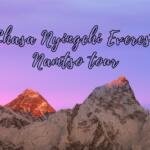Tibet’s allure has captivated many international visitors, including those from Singapore. As Singapore is a visa-exempt country in China, it provides a convenient travel route to Tibet. Here are some tips for Singaporean travellers venturing to Tibet.
1. Visa-free travel within a 15-day period.
As long as you stay in China for 15 days or less, you do not need to apply for another visa. You simply need to have a passport with you. However, if your trip to Tibet exceeds 15 days, you will need to apply for a “Chinese tourist visa.”
2 To travel to Tibet, one must apply for a “Tibet Travel Permit.”
Singaporeans who wish to engage in tourism in Tibet need to apply for a “Tibet Permit“. This application cannot be done personally and can only be facilitated through local travel agents. It is not possible to travel freely in Tibet; one must be part of a guided tour group.
3. Applicants must obtain special documents for Tibet border areas.
Due to the unique nature of Tibet, Singaporeans visiting the border areas of Tibet are required to obtain additional documents such as a “foreigner travel permit,” “military letter,” and others. These areas include Mount Everest base camp, Tibet Ali, Tibet Nyingchi, and more.
4. How did Singaporeans travel to Tibet?
Currently, there are no direct flights from Singapore to Lhasa. It is recommended to transfer to Chengdu first. Upon arrival in Chengdu, you can opt to fly or take the Qinghai-Tibet Railway train to Lhasa.

















